How to reduce unwarranted variation in the NHS was the focus of debate among experts brought together for HSJ’s latest roundtable, as Alison Moore reports
In any discussion about clinical efficiencies or quality of care, unwarranted variation is often the elephant in the room.
We know that not all patients get the optimum care they need: they don’t get put on the appropriate pathway, they receive care which is inadequate or ineffective, and this often costs the NHS more money than giving them the right treatment first time.
And, linked to this, the NHS does not always use its vast purchasing power effectively to keep its costs controlled when buying some of the inputs needed in healthcare.
An HSJ roundtable brought together experts from a wide range of backgrounds to look at some of the issues around variation in care and suggest what could be done to reduce unwarranted variation – the type of variation in care which is not justified by the patient’s needs.
Chairing the event, Alastair McLellan, editor of HSJ, said: “Given that no one is going to turn up with a sackful of money any time soon – any time probably in the next decade – I can’t think of a bigger issue than getting the maximum value from the money which is put in.”
Roundtable participants
Alastair McLellan, editor HSJ – chair
Joe Harrison, chief executive, Milton Keynes Hospital Foundation Trust
Martin Sykes, finance director, Frimley Health Foundation Trust
Des Holden, medical director, Surrey and Sussex Healthcare Trust
Jim Easton, managing director, Care UK
Professor Tim Briggs, national director for clinical quality and efficiency and an orthopaedic surgeon
Candace Imison, policy director, Nuffield Trust
Rose Gallagher, head of standards knowledge and information team, RCN
Professor Jane Metcalf, consultant physician and deputy medical director, North Tees and Hartlepool Foundation Trust
Professor John Newton, chief knowledge officer, Public Health England
Lorraine Bewes, consultant and former finance director
Bryn Davies, European general manager, Syncera
Mike Kimmons, chief executive, British Orthopaedic Association
But what does unwarranted variation – as opposed to that which is necessary and may be beneficial – mean to those round the table?
Candace Imison, director of policy at the Nuffield Trust, highlighted three areas which illustrate the level of variation which exists: GP referrals (which could vary up to tenfold); surgical outcomes; and the care and identification of those with sepsis.
“If you think unwarranted variation is entirely down to clinical, individual, variation then you are barking up the wrong tree,” she said.
Based on evidence
There was evidence that GP referrals were linked to deprivation, and the sex and age of the GP among other factors. While the skill of the surgeon may play a part in clinical outcomes, systems and processes are also important – for example, having systems in place to spot patients who are “going off” and developing sepsis.
Professor Tim Briggs, national director for clinical quality and efficiency, has probably done more than anyone to highlight the variations in surgical treatment and outcomes – and some of the many factors behind it.
“If a trust does not provide orthopaedic surgeons with ringfenced beds their infections are higher,” he said. An estimated £250m to £300m a year could be saved if all surgeons had infection rates comparable with the best at 0.2 per cent.
“There are also individuals. They want to be different. They don’t always follow the evidence – and in many cases there is not the evidence and we have to find the evidence.”
However, there was also massive variation in costs which are not related to volume in many places he visited, he added. Information on this had enabled trusts to understand the evidence and make changes based on it, he said.
If people are not aware of what variation is, how can they compare themselves
British Orthopaedics Association chief executive Mike Kimmons stressed that variation could be good or bad – but above all needed to be understood. In many cases, unwarranted variation was synonymous with unmet need and was met with higher thresholds for access to care and waiting lists.
“I believe the variation dynamic is now maturing with greater understanding,’ he said. Information on optimal care pathways had recently been sent to CCGs, allowing them to compare and contrast and to understand their variation in comparison with their peers.
However, reducing variation does not happen in a vacuum. Deputy medical director at North Tees and Hartlepool Foundation Trust Professor Jane Metcalf was one of several speakers to point out the importance of leadership in setting the culture around quality and safety in a trust.
How organisations know they vary from those around them was also an issue. Do they have the data which shows this and enables them then to tackle some this?
Professor Metcalf said: “I only heard of the Atlas of Variation through my CCG work. My colleagues in the trust are not aware of it. If people are not aware of what variation is, how can they compare themselves?”
She also pointed to different expectations among providers, referrers and populations: she works in Stockton-on-Tees but is the secondary care doctor on a CCG in Harrogate.
Lack of acceptance
And incentives within the system do not always push organisations to do the right thing. “It is in some foundation trusts’ interests to do a lot of work. We need to stop doing that, we need to be a health system.”
Many of the things that are important in outcomes are not measured
Medical director at Surrey and Sussex Healthcare Trust Des Holden pointed out the importance of timeliness in any system. Within Kent, Surrey and Sussex there had been work to ensure that all patients with community-acquired pneumonia were diagnosed through X-ray and all heart failure patients had an echocardiogram as part of their diagnosis.
Sometimes there was a lack of acceptance of the things which were important in patient pathways. “Many of the things that are important in outcomes are not measured. It is only recently we started measuring how many patients with sepsis get antibiotics within an hour,” he said.
As an epidemiologist Professor John Newton, chief knowledge officer at Public Health England, has a multifaceted view of variation. He pointed to data, supply and clinical pressures along with health behaviour of the patient and pressures on commissioners.
Clinicians needed to be able to influence the whole system to reduce variation, he said. “There is still a transparency deficit. There is a huge amount more we can do to report the data and make it available to people. That is one of the causes – people simply don’t know what is going on.” Doctors did not want to be outliers, he pointed out.
Various factors
Syncera European general manager Bryn Davies identified information as important – but also highlighted cultural and human factors. Insight and information could be used to help people make better decisions and remove error, he suggested. But how to share this was a challenge for the NHS.
Jim Easton, managing director of Care UK and a former NHS England director, has a view shaped by experience in and outside the NHS: “One of the sets of scales that drops from your eyes when you are working outside the NHS is about it being a single system when it is incredibly diverse.”
The expectations of patients and carers had also changed
There were a number of factors which might make it harder to spread good practice. Doctors were bright and trained to be independent thinkers, he said, and independence of thought and action was important to them.
This could lead to positions where, for example, there was good compliance with surgical checklists when they were voluntary but this dropped when they were imposed. It could be hard for them to reflect on unwarranted variation when this involved discussing harm to patients.
He contrasted this with how weakly managed the NHS was on introducing some changes around variation.
“Some of the degrees of variation are so large that we have to accept there is real unwarranted variation,” he said. “We have an additional degree of difficulty to get through. All of which just argues for being smarter.”
A slightly broader view was taken by the Royal College of Nursing head of standards, knowledge and information team Rose Gallagher, who came to the issue from a population health perspective.
“We are dealing with more complex patients, more long term conditions and more comorbidity,” she said, adding that the expectations of patients and carers had also changed.
“There can be a bias towards the reactive, whether that is the management of emergencies coming in or whether is it focusing on activity because we are going to get measured on that and that’s the one we need to do today.
“We are on a journey in terms of quality and safety. We have made huge changes, which is really positive but there is much to be done.” Data and IT would be enablers in continuing this trajectory.
Former finance director at Chelsea and Westminster Hospital Foundation Trust Lorraine Bewes said: “The first step in understanding is that people don’t know.”
In her own trust, introducing information systems which demonstrated variation had been a starting point, yet many trusts still did not have things like patient level costing systems 10 years later.
An unintended consequence of the move towards foundation trusts had been fragmentation and the loss of systems and forums which helped trusts understand where they were on variation.
But Martin Sykes, finance director of Frimley Health Foundation Trust, was acutely aware that the data was not always right – and Professor Metcalf pointed out that often the coders had high standards but it was the information they were being asked to code which was the challenge.
Shining a light
Mr Sykes said orthopaedics was an area where there had been good information through the national joint registry for some time. However, often when data around variation was drilled down into, there were explanations put forward for the variation.
It was important to get the data right before discussions could be had around clinical efficiency.
Milton Keynes Hospital Foundation Trust’s Joe Harrison said that as a chief executive he often had to look at data and decide whether it was “right” and should be used.
It is absolutely about where we are not performing and understanding why
Sometimes the data did not help show if there was variation: “On the physician side, I can tell you whether we kill people or not and what the length of stay is,” he said, adding that there certainly wasn’t total understanding of clinical variation and the drivers for it.
But without leaders prepared to have discussions with clinicians around these issues – even if the data wasn’t complete – organisations would get nowhere in tackling them.
Mr Harrison said the biggest focus in the board room tended to be around benchmarking data such as around mortality, and national requirements.
“It is absolutely about where we are not performing and understanding why,” he said. But there were some aspects which were outside the control of the organisation – and he joked that there was a tendency to take the evidence base that showed your organisation was doing well and ignore that which suggested otherwise.
Mr McLellan was keen to highlight some of the factors which had led to a degree of success in reducing variation. He asked Professor Briggs what he saw as integral parts of the approach which had allowed him to make some progress.
Professor Briggs explained he had started by trawling through 12 sets of evidence around orthopaedics: “The first thing that happens when you go to a hospital is that they say the data is crap. But when you have 12 sets of data on it, it’s not rubbish, it tells a very good story.”
Sending that data set to every trust was a starting point: his team then “went to 211 hospitals and met 1,800 consultants” and the solutions became very obvious. His report was published in March 2015 and was followed up with updated data.
”There has been significant change in practice already just from shining a light. But in some trusts there has been very little change. I’m going to visit that 25 per cent to see why there has been no change. But the buy-in we have got is significant.”
Trusts are also being encouraged to report data
An orthopaedic dashboard has now been set up. Crucially it allows trusts to see where they are compared with others: this is driving changes, with trusts now keen to update data.
Trusts are also being encouraged to report data. For example, there is a spinal surgery register but this is only used about 15 per cent of the time.
Now whether trusts are supplying the data to this is shown on the dashboard. “No one wants to be in red. Red is not a good colour. The evidence base drives the agenda.”
He is now looking at expanding this approach across other specialties, and national leads have been appointed across surgical specialties.
In hindsight, he would do more work including more publicity before visiting hospitals to get everyone’s attention and drive better buy in. With other specialties, the approach is being piloted.
Mr Kimmons pointed out that Professor Briggs was convinced there was wide and unwarranted divergence in practice and proved this was the case with evidence. When people were confronted with this they started by denying it but when challenged to disprove it, realised the power lay within them to make changes.
Getting in order
Mr McLellan asked how easy it was to find people who were prepared to put their neck on the line by taking on these roles. Professor Briggs said 10 clinical leaders had been appointed and there had been a fantastic field of applicants.
He also questioned whether it was realistic to ask the government for more funding for the NHS when there was so much variation in care. “We need to put our house in order first and then have a discussion about what we need to do,” he said.
Variation also linked into some of the top causes of litigation against NHS organisations.
People needed to try new things to drive improvements
Professor Newton said he had seen the power of data in other fields such as treatment for cleft palates and also around day cases. “The thing that empowers it is the data and I would put in a plea for disease registers,” he said.
Mr Easton said it was important not to kill innovation – people needed to try new things to drive improvements. There was also a need to performance manage outliers.
“I get sick of death of people who argue about the ingredients when we know it is the recipe,” he said. “We know there is something around the use of data, developing leadership, the incentives in the system.”
The solution was the mix of those that enabled the issues to be tackled.
It was powerful to start with outcomes without making assumptions about what drove these, added Ms Imison. Starting with a discussion about variation in outcomes could then allow clinicians to be engaged.
There was much support for technology as an enabler
Professor Briggs said: “At the moment £1.3bn worth of NHS work is done under any qualified provider – about £400m of this is elective orthopaedics. If we are going to survive as trusts we have to compete for that work.”
He added that there might be positions where some trusts decided not to do this, and would concentrate on other workstreams. “I don’t think it is now sustainable for a trust which knows it has a high infection rate to continue to do it.”
Trusts needed to look at the flow of patients both in and out in order to ringfence beds, he added.
If this discussion was happening in any other sector, technology would feature very highly, suggested Mr McLellan. There was much support for technology as an enabler around the table but also suggestions that its uses were only being exploited on a small scale.
Unwarranted variation
Mr Davies said the reaction from inside the NHS was often that IT “did not work”.
“Even with technology that has been around for 10 or 15 years in other industries that can be a challenge,” he said. That was true of things like GS1 standards for barcoding.
A step change is needed for the senior leadership of the NHS to be more tech literate
He added that knowledge could sometimes be stranded in an individual and needed to be extracted and put in a place where it was not siloed but was more generally accessible.
“When you do get functioning electronic records that opens up all sorts of new opportunities,” said Ms Imison.
However, even internationally recognised healthcare systems such as Intermountain, with a strong culture around improvement, found it hard to change clinical pathways.
Mr Easton said that the NHS could not avoid some of the challenges of the future through more staffing: it would be necessary to intermediate with technology. He said that some of the care around sepsis could and has been codified into technology so changes in temperature, for example, which are indicative of developing problems could be picked up.
But how engaged are the leaders in the NHS with making the best use of technology? Professor Newton pointed out: “In many other industries the chief executives would be all over the technology, as would the finance director. A step change is needed for the senior leadership of the NHS to be more tech literate.”
In some areas, technology that really makes a difference is already there. Mr Davies said that scanning implant boxes could highlight any mismatch between implant and recipient and potentially avoid a never event when the wrong implant is given to a patient.
Unwarranted variation may still be with us for many years to come – but NHS organisations will have enhanced tools, through better use of data and developing technologies, to address it.
Bryn Davies on the battle against variation as a series of opportunities
There isn’t an issue more pressing for the NHS right now than getting maximum value out of the money hospitals are given, and unwanted variation unquestionably drains value.

Unwanted variation is particularly prevalent in GP referrals, surgical outcomes, transitions to post-operative care, pricing (due to lack of transparency), pathways for referral and care, population health management, and IT infrastructure.
The healthcare leaders at this roundtable, who included finance directors, managing directors, chief executives, medical directors and researchers, discussed ways of eliminating unwarranted variation and explored integrated, cross-disciplinary solutions.
Variations lead to unmet needs and, therefore, potential approaches to solving unwanted variation should be seen as opportunities to meet the needs of surgeons, nurses, staff, patients and communities, as well as the needs of the hospital, trust and NHS. A number of factors are key to this:
- Strong leadership must present a unified vision and promote a culture of openness throughout and between organisations, so that peer groups can leverage shared knowledge into change across the NHS.
- Data is an artefact of coding, which results directly from the quality of documentation. High-quality documentation allows for accurate root-cause analysis and is the bedrock of trustworthy data in terms of clinical outcomes and unwanted variation.
- Better data also arises from refined definitions and standardised parameters for collection and examination. In turn, data that is relevant to practice will drive innovation and competition between individuals (eg surgeons) and systems of care to avoid being outliers.
- Peer-to-peer, clinically led review of services that is empowered by data leads to individual clinical change and innovation, particularly towards evidence-based performance management and practices.
- Care pathways and IT systems should be aligned for automated decision-making in a patient-centred way – not to make care rigidly inflexible, but to eliminate unwanted variation in micro-decisions, thus leaving flexibility in decision making to the times where skilled judgement calls are needed.
Some variation in care will always be necessary, but should be reserved for times when expertise is truly needed. Targeting unwanted variation means targeting areas of care that are most open to standardisation – while prioritising safety, low complication rates, optimised outcomes and the best value for the taxpayer.
Bryn Davies is the general manager, Europe, at Syncera by Smith & Nephew
Syncera is a strategic business unit of Smith & Nephew. Our unique digital solutions are designed to help reduce unwarranted perioperative variation and optimise operating theatre efficiency. Optionally linked with clinically proven hip and knee implants to deliver further cost efficiencies.
Topics
- Care UK
- CHELSEA AND WESTMINSTER HOSPITAL NHS FOUNDATION TRUST
- Commissioning
- Efficiency
- Finance
- FRIMLEY HEALTH NHS FOUNDATION TRUST
- Infection control
- Jim Easton
- Leadership
- Long-term conditions
- Milton Keynes University Hospital NHS Foundation Trust
- Mortality rates
- North East
- NORTH TEES AND HARTLEPOOL NHS FOUNDATION TRUST
- Nuffield Trust
- Patient safety
- Public Health England
- Quality and performance
- Royal College of Nursing (RCN)
- South
- South Central
- Surgery
- SURREY AND SUSSEX HEALTHCARE NHS TRUST




















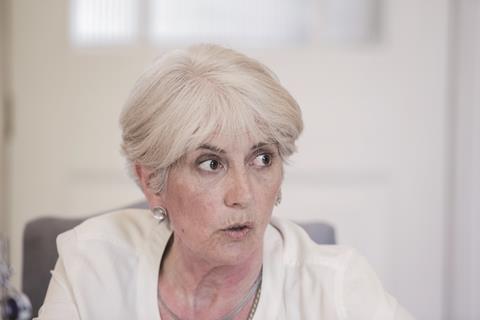
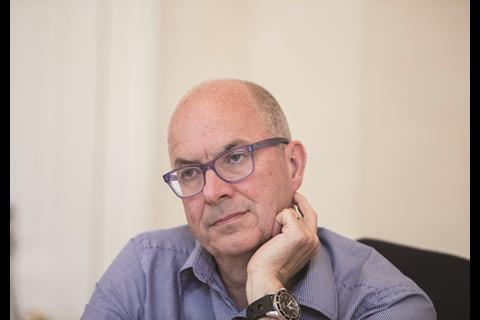
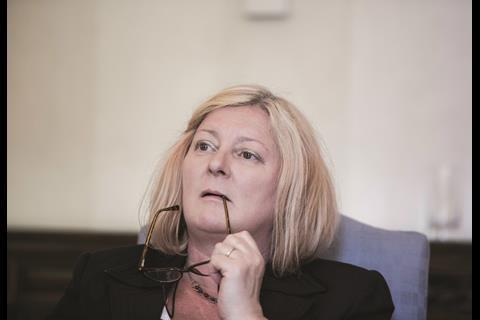
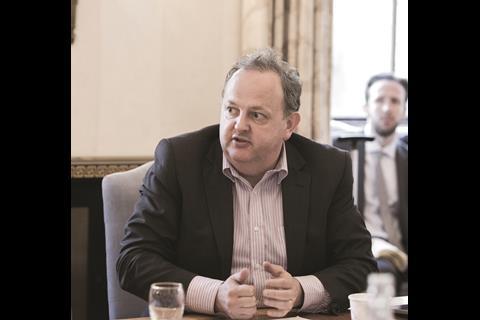
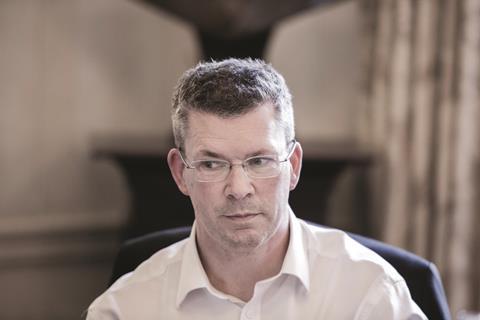

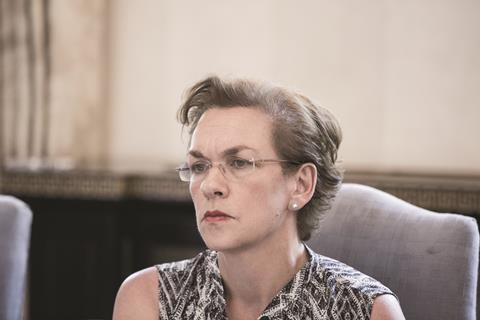
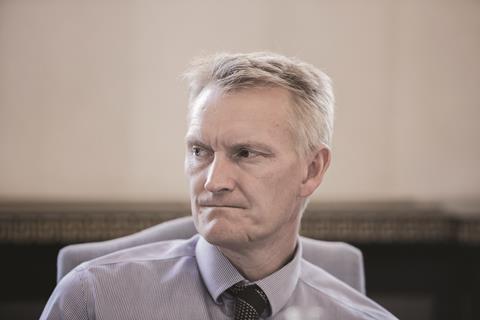
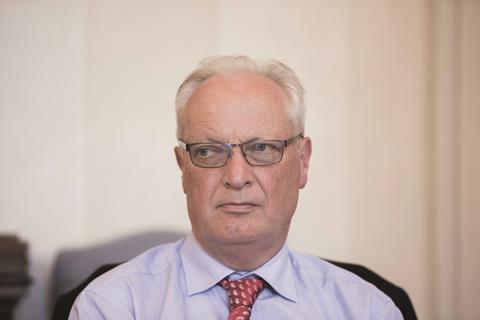
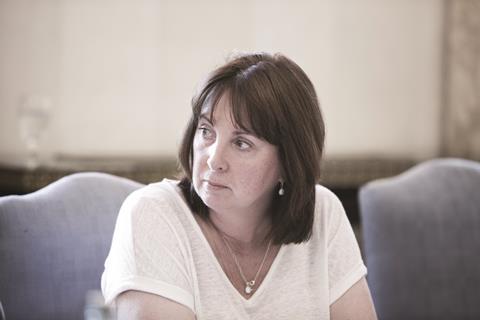
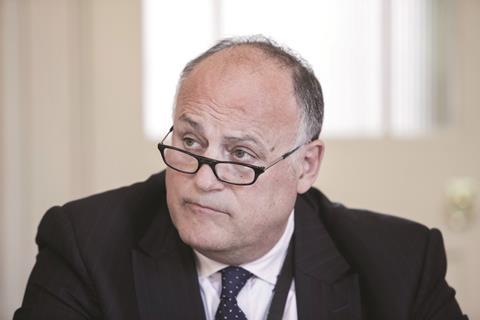







No comments yet